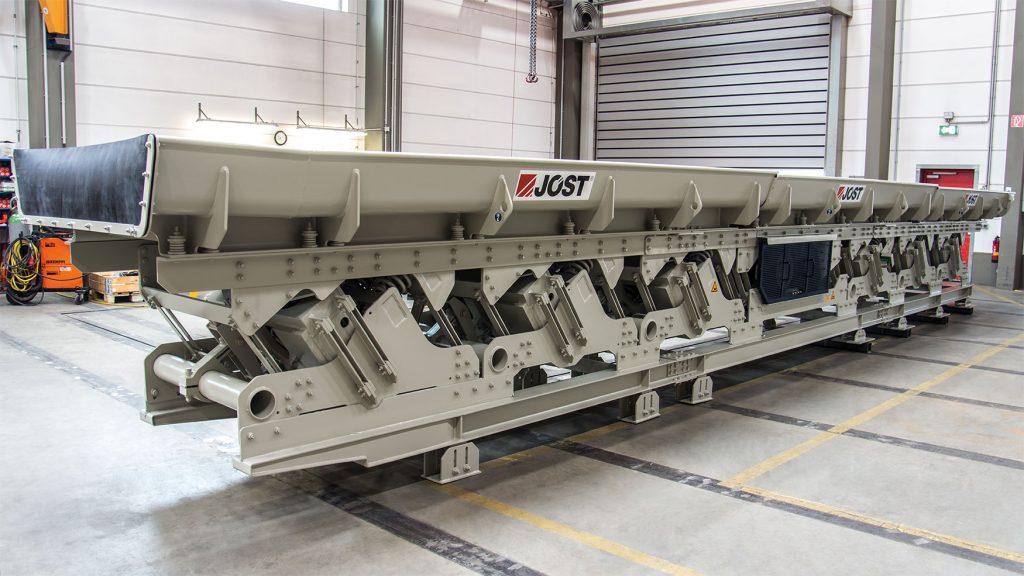FOUNDRY & STEEL INDUSTRY
Castings and Sand Transport with the JOEST Vibrating Through Type Feeder

c
The vibrating through type feeder is positioned after a pre-shakeout feeder. The 1,400 mm wide and 12,600 mm long type feeder delivers the cast iron parts to baskets, which are attached to a suspension track, via a manipulator. The remain sand deduction runs parallel.
The vibrating through type feeder relies on the mass compensation resonance principle. The vibrations and dimensional forces are compensated by active vibration dampers. The result is that transmission of vibration to the foundational steel construction is minimised.
The heavy duty vibrating FSM feeder differs mechanically from the common trough type feeder. Some parts are manufactured from solid material when manipulators are used, in contrast to the common feeder. The extra durable trough, which is fixed on top, is stabilised by additional suspension arms and stiffening. These additional suspension arms ensure a clean and straight output of the 600 Grad cast iron parts, despite rough conditions caused by the manipulator.
The 13,8 t feeder’s is efficiency is due to its 7.5 kw electric motor. The modularity of the parts allows for an easy assembly even in restricted spaces. The vibrating feeder is equipped with a vibration width regulator so different products or product sizes can be accommodated. The machine delivers up to 116 t of sand per h.
No matter what requirements our customers may have – JOEST offers the required experience, know-how and custom engineered solutions for your market success. Simply contact us!
Weitere Beiträge
As part of the JOEST group, MOGENSEN has been a trusted provider of high-performance screening and sorting technologies for many years. The new website now showcases this expertise more clearly and with a modern touch.
On International Women’s Day, we celebrated the great women in our company who have made a significant contribution every day with their commitment, expertise and passion. Their efforts have been a driving force behind our success and an inspiration to us all.
JOEST South Africa was commissioned to manufacture and supply replacement vibrating feeders for a critical power generation facility. The new units are designed to replace equipment that had been in operation for over 20 years, ensuring the continued reliability and efficiency of the plant.
MOGENSEN joins China’s food security project as an official supplier, supporting the nation’s plans to strengthen domestic grain production capabilities. The appointment by COFCO, China’s largest state-owned agricultural company, includes the deployment of multiple precision screening systems for processing rice, wheat and soybeans, among other grains. This long-term initiative is in line with China’s new food security law, which went into effect on June 1, 2024.






Please contact me regarding a vibrating conveyor capable of handling hot mineral sands material
Temp – 150C
Length – 25m
Tph – 150
Bulk density – 2.6
SG – 4.5